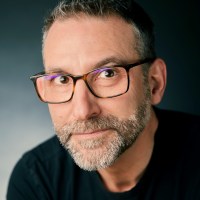Is cord-cutting a big deal? Do a lot of people really get their broadcast channels for free, instead of paying for a cable or satellite subscription? According to a new report from Nielsen that analyzes the over-the-air (OTA) trend in-depth, the answer is yes.
According to the company that made its name gathering TV ratings data, 14 percent (or 16 million) of U.S. homes now participate in the cord-cutting trend, which represents a 48 percent increase over an eight-year span.
Beyond this top-level statistic, which on its own isn’t that surprising, is a realization that not all cord-cutters are the same. In fact, there are two distinct groups within the cord-cutting universe, with a very small, yet growing third group that’s worth paying attention to.

Here’s how it breaks down:
No Subscription Video On Demand (SVOD): 6.6 million homes
This group of OTA TV viewers rely exclusively on the free content they can get via their antennas, or online if they have internet access (not all of them do). They do not subscribe to services like Netflix, Amazon Prime Video, or the non-Hulu Live TV service. They tend to skew older at a median age of 55, they’re more likely not to have kids at home, and they’ve got much smaller annual incomes than average, at a median of $21,000. They own fewer devices like smartphones, tablets, or streaming gadgets, or may not own any. These households make up six percent of all U.S. homes.
Plus SVOD: 9.4 million homes
These households do subscribe to one or more
These two groups form the majority of the cord-cutting universe in the U.S., but there’s a third group — more of a sub-group to the Plus SVOD crowd — that stands apart and may represent the most significant shift in cord-cutting behavior, at least as far as the cable and satellite companies are concerned. Measured for the first time in 2018, Nielsen labels them “Plus Virtual Multichannel Video Programming Distributor” (Plus vMVPD), and they are the Plus SVOD viewers who also subscribe to the growing number of broadcast channels available as over-the-top (OTT) streaming subscriptions. Companies like Sling TV,
Needless to say, when you spend more on your content, you’re more likely to have more money. Plus vMVPD viewers are wealthier, and more likely to have a college degree than the cord-cutters who don’t use OTT services. They’re slightly older than their Plus SVOD counterparts and much more likely to own connected devices than the average OTA viewer.
What does this all mean? We think it’s a sign that not only are consumers increasingly resistant to the idea of having to pay a monthly fee to their cable or satellite company, they’re willing to explore any options that give them this freedom — even if it means ending up with a total monthly bill that starts to look a lot like what they used to pay. It also demonstrates that companies like Roku, Tablo, Silicon Dust, Amazon, and Tivo, are on the right track as they try to create devices and services that bring together OTA, SVOD, and vMVPD services under one easy-to-navigate user experience.



